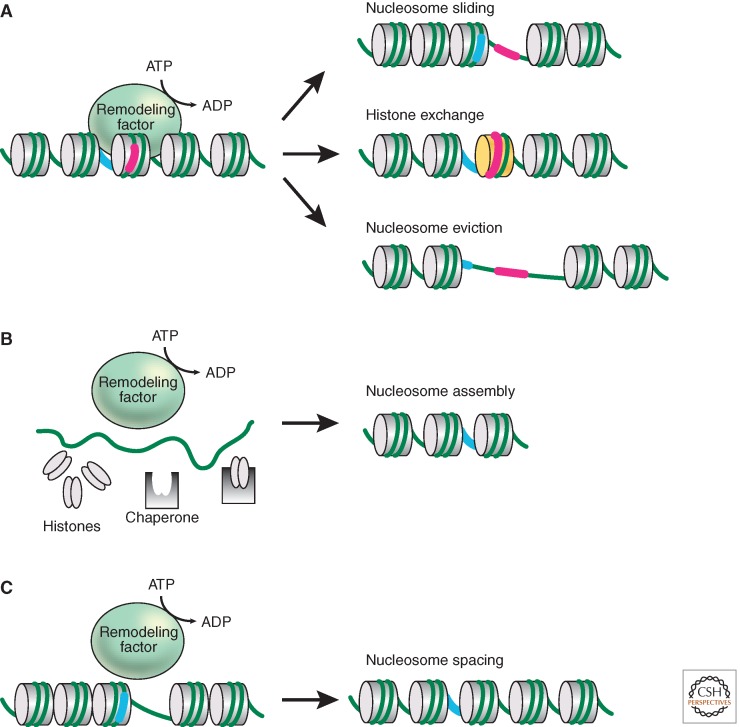Figure 2.
Consequences of ATP-dependent nucleosome remodeling. (A) Models for nucleosome remodeling are illustrated by showing the change in position or composition of nucleosomes relative to the DNA wrapped around it. The left panel indicates a starting chromatin region with DNA reference points in the linker DNA or on the nucleosome shown in blue and pink, respectively. The right panels show possible outcomes of the remodeling reaction (from top to bottom): translational movement of a nucleosome (sliding) to expose a region that was previously occluded, exchange of a standard histone for a variant histone, and eviction of a nucleosome to expose the associated DNA. (B) Some nucleosome remodeling factors are also able to cooperate with histone chaperones to wrap DNA around histone octamers to generate nucleosomes. (C) Nucleosome remodeling factors may equilibrate the distances between nucleosomes in irregular arrays in a process termed nucleosome “spacing.”

